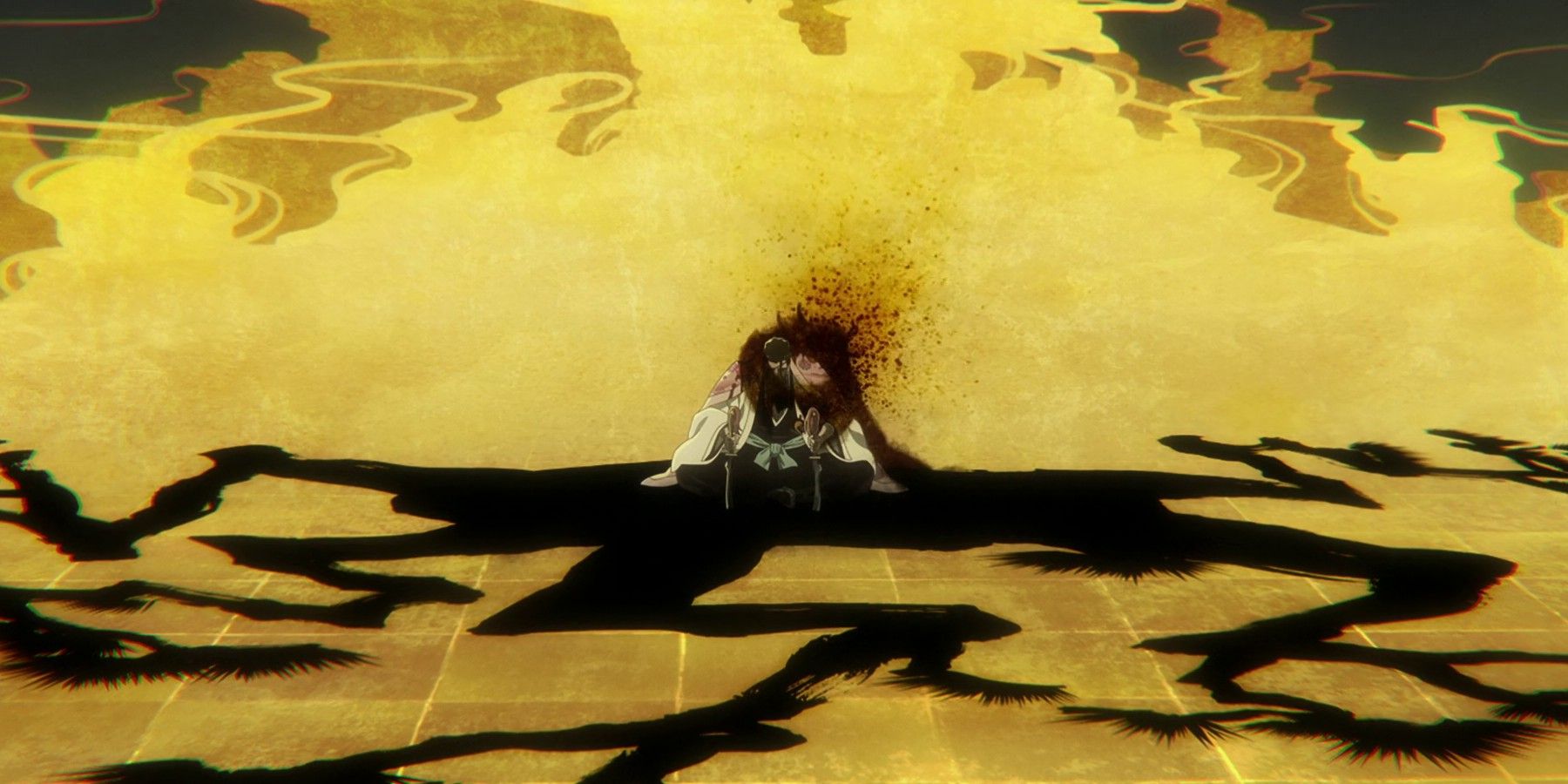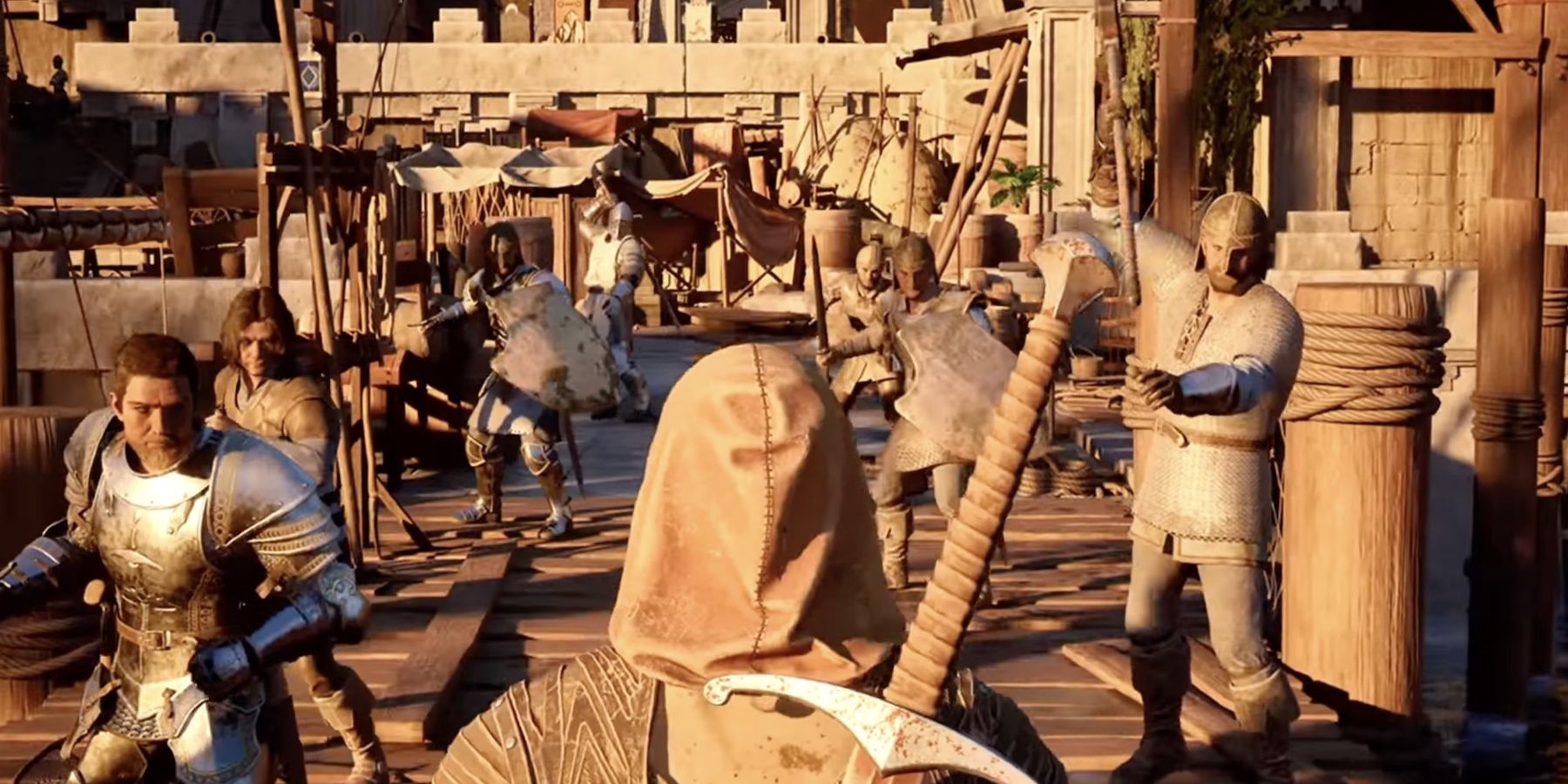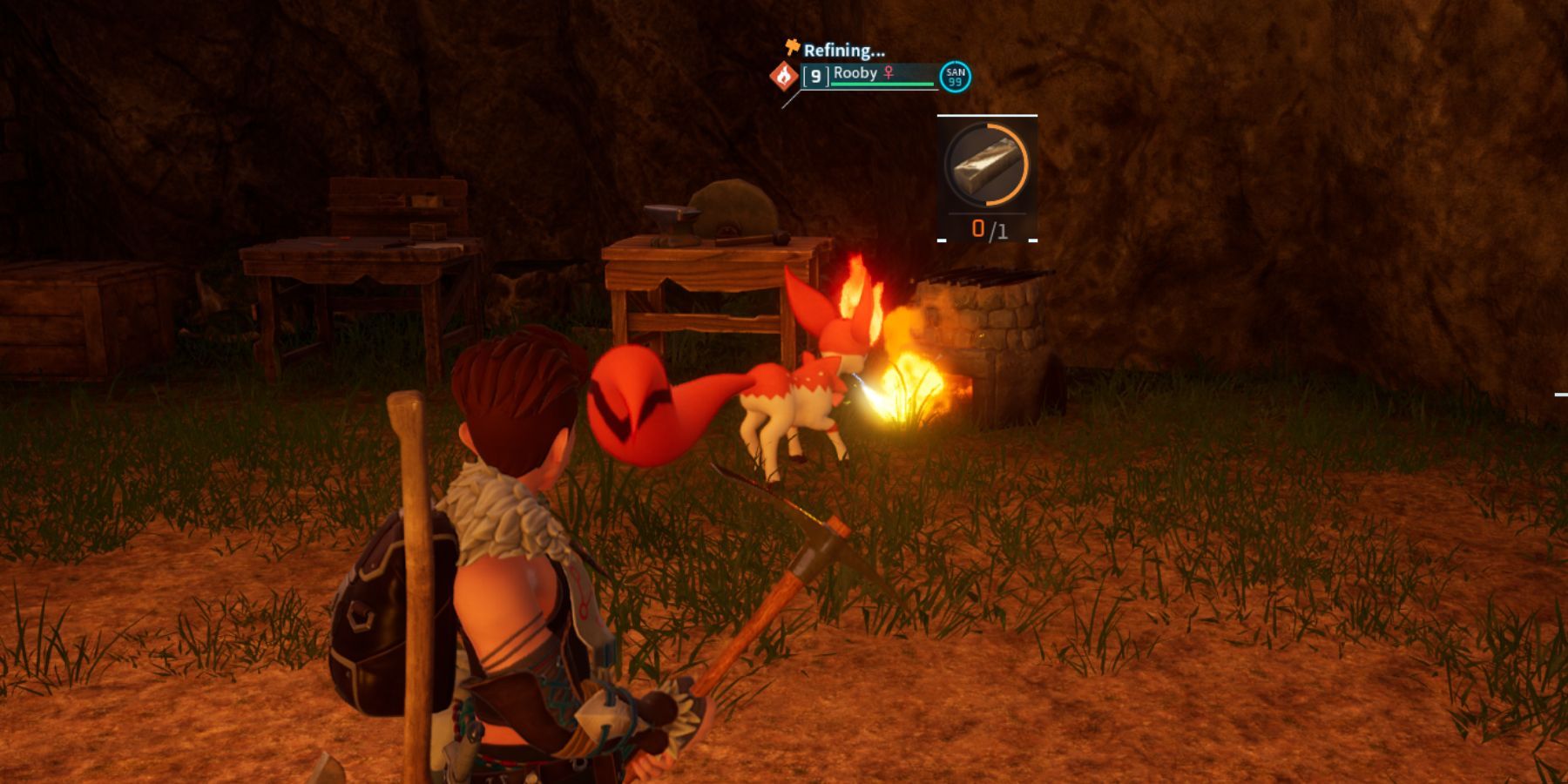Key Takeaways
- Captain-Commander Shunsui Kyōraku’s Bankai reveal in BLEACH: Thousand-Year Blood War Part 3, Ep. 9 met fan expectations.
- Kyōraku’s Bankai forces mutual destruction on enemies, emphasizing tragic play themes with stunning animation.
- Lille Barro’s Vollständig transformation showcases bizarre changes, emphasizing divinity in contrast to Kyōraku’s Bankai.
The following contains spoilers for BLEACH: Thousand-Year Blood War Part 3, Episode 9, “DON’T CHASE A SHADOW”, available on Hulu and Disney+.
One of the most anticipated events in the climactic arc of BLEACH is the reveal of Captain-Commander Shunsui Kyōraku’s Bankai in BLEACH: Thousand-Year Blood War Part 3, episode 9, when the laid back Captain faced off against Sternritter X – The X-Axis, Lille Barro. The episode was absolutely gorgeous and the immense detail in these scenes is a testament to the sheer amount of work that went into making it.
As the first part of one of the most intense fights in BLEACH, Kyōraku vs Lille Barro is conceptually an amazing fight that undoubtedly met the lofty expectations of fans who have been waiting for a very long time to see this part of the story animated.
The scary thing about children’s games is that you never know when or what game is about to start. No matter how uninterested you might be, once they take you by the hand, it’s over. You’re stuck playing until you’re dead. Your hand’s already been taken – so let’s keep playing until we die, shall we?
– Shunsui Kyoraku, “DON’T CHASE A SHADOW”
RELATED
The 400th Episode of BLEACH Serves Up One of the Series’ Creepiest Fights Yet
The 400th episode of the BLEACH anime gave us the first part of the battle between Pernida and Kurotsuchi, but did it live up to the milestone?
Bringing Swords to a Gunfight, Again
Kyoraku’s True Power
Throughout BLEACH, and even once before in this very arc, Kyōraku has always been pitted against enemies whose main weapons are guns of some kind. Kyōraku, as a Shinigami, comes from a society that is effectively feudal Japan, so there’s a deliberate contrast being made between himself and the enemy, who always comes from a position fundamentally opposed to the sentiments and values of the Shinigami and Soul Society.
Lille wonders how Kyōraku managed to close the gap between them so quickly, but later tells him that the Quincies have data on all their fights up until the current, and that’s how he knows that Katen Kyokotsu is a Zanpakutō capable of making children’s games real. He believes that the ability also involves some kind of illusion, but that’s only half-right. Nanao is close by and refuses to leave without him, so Kyōraku tells her to inform the rest of the group.
|
Kyoraku’s Battles Against Gun-Toting Opponents |
||
|
Opponent |
Race |
Result |
|
Coyote Starrk |
Arrancar |
W |
|
Robert Accutrone |
Quincy |
N/A, lost an eye |
|
Lille Barro |
Quincy |
W? |
While they are apprehensive about leaving an ally to fight, Shinji reminds them that Kyōraku is the Captain-Commander, and if it were Yamamoto ordering them not to interfere, they would get it: the Captain-Commander is one who must lay down his life for the sake of those who follow him. Kyōraku’s facial expression throughout his engagement with Lille is extremely daunting, with the same wolf-in-sheep-clothing deadness in the eyes that Unohana had when she revealed her true nature. The juxtaposition of children’s games with the violence of all-out war further darkens the atmosphere of this fight, not to mention the fact that Kyōraku’s territory is the shadows, so he can attack Lille through his shadow as part of the game known as Kage Oni (“Shadow Ogre”).
While Lille was correct about Kyōraku’s Zanpakutō and its rules based on children’s games, what he didn’t really understand about it is how Kyōraku is able to make afterimages. Because they rely on their spiritual perception, Kyōraku manipulates reishi into a shape that resembles him, so even someone who is on guard regarding illusory techniques will be completely out of their depth, but also, the more powerful they are, the more realistic the afterimage. When Kyōraku skewers Lille Barro, the Quincy decides that enough is enough.
Lille Barro’s Quincy: Vollständig
“Be Not Afraid”
When Lille Barro opens his eyes, he is able to make use of his Schrift to its fullest potential. As the first Sternritter ever to receive a Schrift from Yhwach, Lille believes himself to be the closest to god, Yhwach’s masterpiece. Due to the utter brokenness of his ability, Lille has a handicap, keeping his left eye shut at all times, except if a battle leads him to open his eyes three times. In that case, he is granted permission to make full use of the X-Axis. He says using his full ability at all times would be “unfair to sinners”, so Kyōraku humorously asks him to keep it shut. Lille’s Vollständig is odd when compared to the others, with the most profound changes to his appearance.
He looks less human now and more like an Angel from Neon Genesis Evangelion, leaning into the territory of the humorous concept of “biblically accurate angels” and how notoriously unsettling their true “physical” forms are. A vision of something akin to a god only necessitates the use of something equal and opposite; perhaps a demon, or something else that is inherently sinister. Interestingly, this connection to divinity touted by Lille Barro fits the four-act progression of Kyōraku’s Bankai, which is inspired by the traditional Japanese threatre known as “Nō” (also Romanized as “Noh”).
The Theater Suicide
Shunsui Kyōraku’s Delightfully Animated Bankai
There are various forms of traditional Japanese theater, each with their own unique qualities, but what Kyoraku’s Bankai seems to lean on specifically is a tragic play called “The Love Suicides at Sonezaki”, written by Chikamatsu Monzaemon in 1703. Put simply, his Bankai thrusts upon him and the opponent the roles of the lovers in the play, with each act correlating to ways in which characters from the kabuki play attempted to die together.
The way in which the Bankai was animated really plays up the reference to the play, but also really emphasizes the concept through the visuals, creating the sense that the battlefield is the stage and everyone present is an actor. Each act of the play presents a new challenge, but the reason why Kyōraku hardly ever uses his Bankai is because it ensures the defeat of the enemy through mutually assured destruction and forces all within the vicinity of its Reiatsu to suffer the same fate.
The use of more traditional-sounding renditions of soundtracks like “Battle Ignition” fit into the concept of Japanese theatre and thus enhances the concept introduced in the manga. After the final act, Lille’s throat swelled up and exploded, taking his head with it. The whole episode was incredible, but seeing the care that went into Kyōraku’s Bankai and Lille’s Vollständig was truly the best part, as we wait for the second installment of Kurotsuchi’s battle against Pernida Parnkgjas, which was very noticeably only a matter of concern in the beginning of the episode and the next one’s preview.

/cdn.vox-cdn.com/uploads/chorus_asset/file/25532310/STK478_breaking_into_phone_A.jpg)









